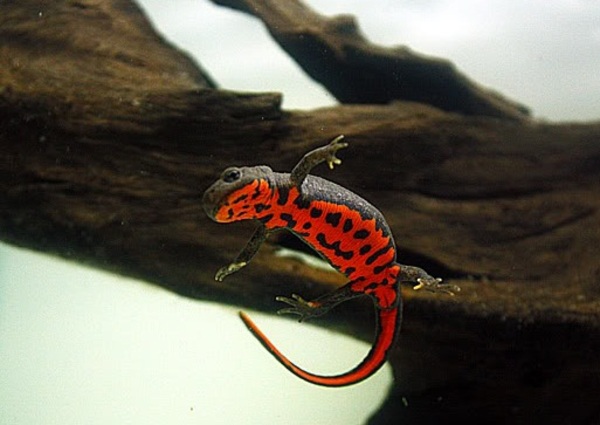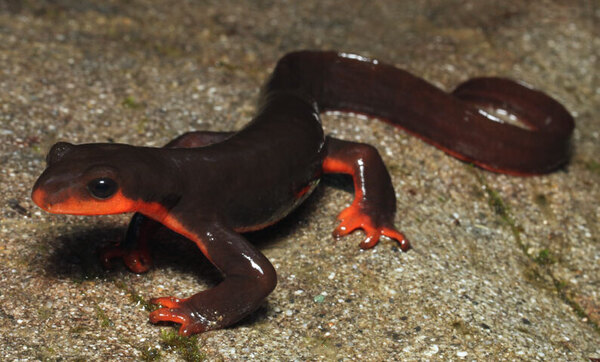Fire Belly Newts are some of the coolest little creatures you can keep as pets. With their bright, fiery bellies and curious behavior, they’re not just fun to watch, but they also make great low-maintenance companions. Whether you’re a seasoned pet owner or a beginner looking to dive into amphibian care, Fire Belly Newts can be a great choice. In this guide, I’ll walk you through everything you need to know to keep your Fire Belly Newt happy and healthy!
What Are Fire Belly Newts?
Types of Fire Belly Newts: Chinese vs. Japanese
Setting Up the Perfect Tank
What Do Fire Belly Newts Eat?
How Long Do Fire Belly Newts Live?
Common Health Problems and How to Avoid Them
Fun Facts About Fire Belly Newts
FAQs
So, first things first: what exactly are Fire Belly Newts? These little amphibians are known for their bright orange or red bellies, which is where they get their name. They belong to the genus Cynops, and there are a couple of different species to know about, the most common ones being the Chinese Fire Belly Newt and the Japanese Fire Belly Newt. They’re semi-aquatic, which means they spend time both in the water and on land.
Despite the fact that they have toxic skin (to deter predators), these newts are pretty chill and make great pets. They can live a long time with the right care, making them a solid option if you’re looking for a long-term companion.

There are two main types of Fire Belly Newts: the Chinese Fire Belly Newt (Cynops orientalis) and the Japanese Fire Belly Newt (Cynops pyrrhogaster).
Chinese Fire Belly Newt:
Size: Around 3 inches long.
Appearance: Smooth skin with vibrant orange belly.
Personality: These are super friendly, and they’re usually easier to care for, so they’re a good choice if you’re just starting out.
Japanese Fire Belly Newt:
Size: A bit bigger, around 4-5 inches.
Appearance: Rougher skin and darker belly coloration.
Personality: These newts can be a bit more challenging to care for, but they’re still a great pet if you’ve got some experience.
Now, let’s talk about setting up the ideal home for your Fire Belly Newt. They’re not too picky, but there are some key things you’ll want to get right.
Tank Size: For one or two newts, a 10-20 gallon tank is a good size.
Land and Water Balance: Fire Belly Newts are semi-aquatic, meaning they need both water and land. Try to have around 70% water and 30% land. You can use floating cork bark or a gentle ramp so they can easily move between the two environments.
Water Conditions:
Temperature: Keep the water between 60-75°F. You might not need a heater, but make sure the water doesn’t get too warm.
Filtration: Newts like clean water, but they don’t like strong currents. Get a gentle filter to keep things fresh without disturbing them too much.
Substrate: Smooth gravel or sand is good for the water. On the land, you can use moss to help keep the humidity up.
Hiding Spots: Newts love to have places to hide, so add some plants, rocks, or driftwood. This gives them a sense of security and helps reduce stress.

Fire Belly Newts are carnivores, so you’ll need to feed them a variety of foods to keep them healthy. Here’s what you can offer:
Live Foods: They love bloodworms, brine shrimp, small earthworms, and blackworms.
Frozen Foods: If you don’t want to deal with live food, frozen options like bloodworms and shrimp work just as well.
Pellets: Amphibian pellets can be a great supplement, but don’t rely on them entirely.
Feeding Tips:
Adult Fire Belly Newts don’t eat every day—3 to 4 times a week is perfect.
Always remove uneaten food to avoid dirtying the water.
Vary their diet to make sure they’re getting all the nutrients they need.
With proper care, Fire Belly Newts can live for 10-15 years! They’re definitely a long-term commitment, but they’re pretty low-maintenance once you get their habitat right. The key to longevity is making sure they have a clean, comfortable environment and a balanced diet.
Like all pets, Fire Belly Newts can run into a few health issues, but most are preventable with proper care. Here are some common problems:
Skin Infections: This can happen if the water quality isn’t up to par. You might notice patches or peeling skin. To prevent this, keep the water clean and avoid overcrowding in the tank.
Stress: If they seem lethargic or stop eating, it could be a sign of stress. Make sure they have plenty of hiding spots, a peaceful environment, and aren’t being disturbed too much.
Improper Molting: Sometimes, newts don’t shed their skin properly. If you see them struggling with shedding, it could be due to low humidity or poor water quality. Ensure the environment is right for them to molt safely.
If you notice any of these symptoms, it’s always a good idea to consult a vet who’s experienced with amphibians.
Toxic Belly: Their bright belly color isn’t just for show! It’s a warning to predators, telling them that the newt is toxic.
Regenerative Powers: Fire Belly Newts can regrow lost limbs, tails, and even parts of their internal organs!
Friendly but Not Bitey: Even though they can be toxic, Fire Belly Newts are generally very calm and rarely bite.
Great Swimmers: They’re excellent swimmers but also love to bask on land.
Q1: Do Fire Belly Newts need special lighting?
Not really! They don’t need UVB lighting like some reptiles. A soft light to enhance their colors is all you need.
Q2: Can Fire Belly Newts live with fish?
It’s not the best idea. Fish can stress out your newts, and some fish might even try to snack on them!
Q3: How long do Fire Belly Newts live?
With proper care, they can live up to 15 years—quite a long time for a small pet!
Q4: Are Fire Belly Newts poisonous?
Yes, they have toxins in their skin. Just make sure to wash your hands after handling them.
Q5: What’s the best tank setup for Fire Belly Newts?
A semi-aquatic tank with clean water, a land area, and plenty of hiding spots works great for Fire Belly Newts.
Fire Belly Newts are truly fascinating creatures. They’re easy to care for once you’ve got their environment dialed in, and they’re low-maintenance compared to other exotic pets. Whether you’re just starting with amphibians or are a seasoned pet owner, these newts will surely bring a lot of joy and color to your home. With proper care, they can live a long, healthy life and provide years of entertainment.
So, are you ready to add a Fire Belly Newt to your family? They’re sure to light up your life!
animal tags: Fire-Belly-Newts
We created this article in conjunction with AI technology, then made sure it was fact-checked and edited by a Animals Top editor.